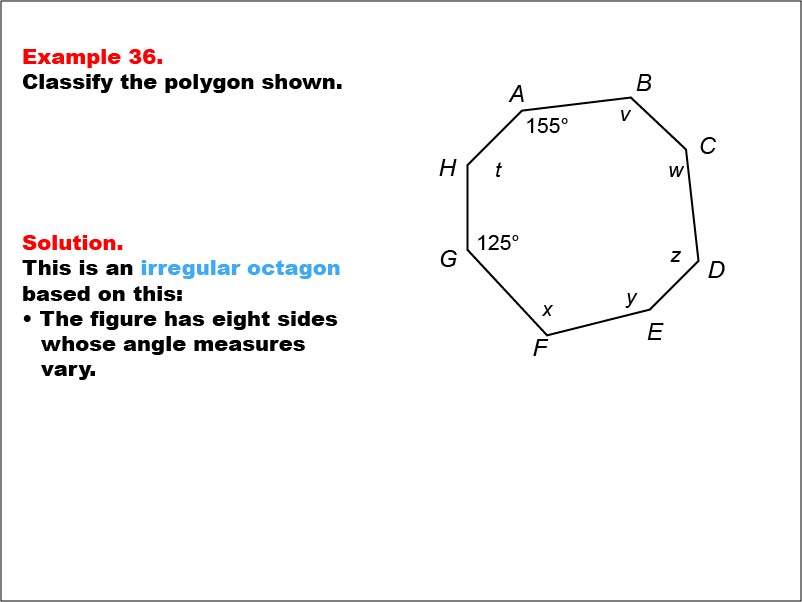
Display Title
Math Example--Polygons--Polygon Classification: Example 36
Display Title
Math Example--Polygons--Polygon Classification: Example 36

Topic
Polygons
Description
This example features an octagon with angles labeled as 155° and 125°, and other angles labeled with variables t, v, w, x, y, and z. The angles vary, indicating it is irregular. It demonstrates how a combination of specific angle measures and variables can be used to show irregularity in polygons.
Understanding polygon classification is essential in geometry as it helps students recognize and categorize shapes based on their properties. This collection of examples highlights the importance of angle measures in determining the regularity of octagons, showing that even partial information can be sufficient for classification.
Exposure to multiple worked-out examples is vital for students to develop a comprehensive understanding of polygon classification. Each example presents a unique scenario, allowing students to apply their knowledge and reinforce their ability to analyze polygons based on given information, even when it's incomplete.
Teacher's Script: Let's examine this octagon together. We see some specific angle measures and other angles represented by variables. What does this tell us about the shape? Even without knowing all the angle measures, how can we use this partial information to classify the octagon as irregular? Think about why having even two different known angle measures is enough to determine irregularity in an octagon.
For a complete collection of math examples related to Polygons click on this link: Math Examples: Polygon Classification Collection.
| Common Core Standards | CCSS.MATH.CONTENT.5.G.B.3, CCSS.MATH.CONTENT.7.G.B.6 |
|---|---|
| Grade Range | 6 - 8 |
| Curriculum Nodes |
Geometry • Polygons • Definition of a Polygon |
| Copyright Year | 2013 |
| Keywords | polygons, classification |